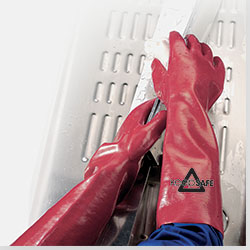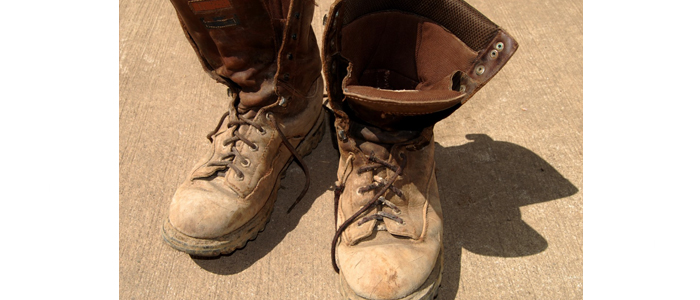Polyvinyl Chloride, better known as PVC, is a durable and long-lasting thermoplastic made of chlorine and carbon which is commonly used for a wide range of applications. Its properties make it an ideal material for work gloves, as it is flexible whilst also offering a great grip and a good level of abrasion resistance.
A Guide To Single And Double Dipped PVC Gloves

PVC coated gloves typically contain a liner material which has been dipped in PVC to create a protective layer. The different types of PVC dipped gloves include:
- - Single Dipped PVC Gloves – These gloves offer some resistance to oil, chemicals and grease.
- - Double Dipped PVC Gloves – With twice the PVC, these gloves offer wearers increased protection from oil, chemicals and grease, as well as a superior level of puncture and abrasion resistance.
- - Part Coated PVC Gloves – These gloves are only partly covered by PVC protection, typically with material or elastic cuffs.
- - Fully Coated PVC Gloves – These gloves are fully coated in PVC and are often gauntlets, giving extended protection over the wearer’s wrist and arm.
When are PVC coated gloves needed?
PVC protective gloves are commonly used in a wide range of industries in which the wearer is regularly exposed to water, aqueous solutions, detergents, diluted bases, and acids, or where the wearer requires protection from cuts and abrasion. This includes:
- - Chemical industries and laboratories
- - Warehouses
- - Transport
- - Gardening
- - Janitorial work
Regulations & Standards for PVC Gloves
Just like all PPE wear, PVC gloves adhere to a number of relevant regulations and standards which ensure they are fit for purpose. These include:
- - EN374 – This European Standard concerns gloves which give protection from chemicals and micro-organisms.
- - EN388 - This European Standard concerns gloves which give protection from mechanical risks.
- - Control of Substances Hazardous to Health Regulations (2002) – This set of regulations stipulates that employers have the responsibility to protect workers from exposure to any substances that may be detrimental to their health, by supplying them with the correct PPE such as PVC coated gloves.
- - Personal Protective Equipment Regulations (2002) – These regulations set out that all PPE equipment supplied by employers must be fit for purpose, stored correctly, maintained to the correct standard and replaced when necessary.
Comments
Latest Blogs

An updated guide by consumer organization Which? looks at how to protect people’s ears. They focus on two main types of ear protection, earplugs and ear defenders.

A review submitted by the Department of Work and Pensions (DWP) has recommended that the Health and Safety Executive (HSE) should compel employers to improve their behaviour in issues of workplace health and safety.

Drivers are being urged to consider their footwear choices when behind the wheel, particularly during hot summer days when flip-flops are popular.

Leave a comment